Carved on the riser of one of the front steps of the Colorado State Capitol is a well- known phrase: One Mile Above Sea Level. I’ve read that the measurement has been resurveyed a couple of times, and that step isn’t actually at a mile, a lower one is. Never mind. This is the tourist mile-high line.
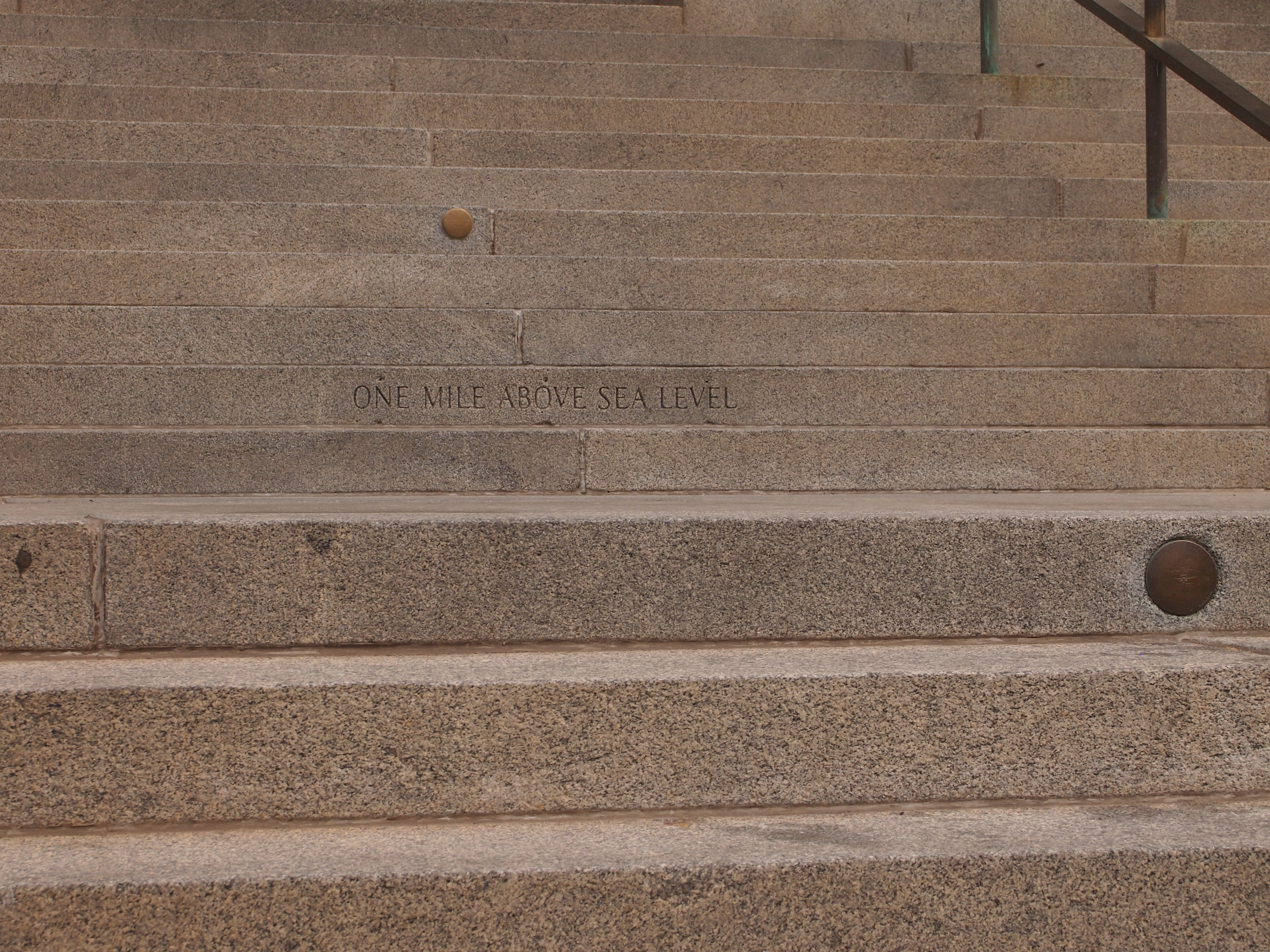 As part of the city’s identity, that metric is well known. I saw a group of Korean tourists (I’m pretty sure that’s what they were speaking) snapping away at the mile-high step just like I did.
As part of the city’s identity, that metric is well known. I saw a group of Korean tourists (I’m pretty sure that’s what they were speaking) snapping away at the mile-high step just like I did.
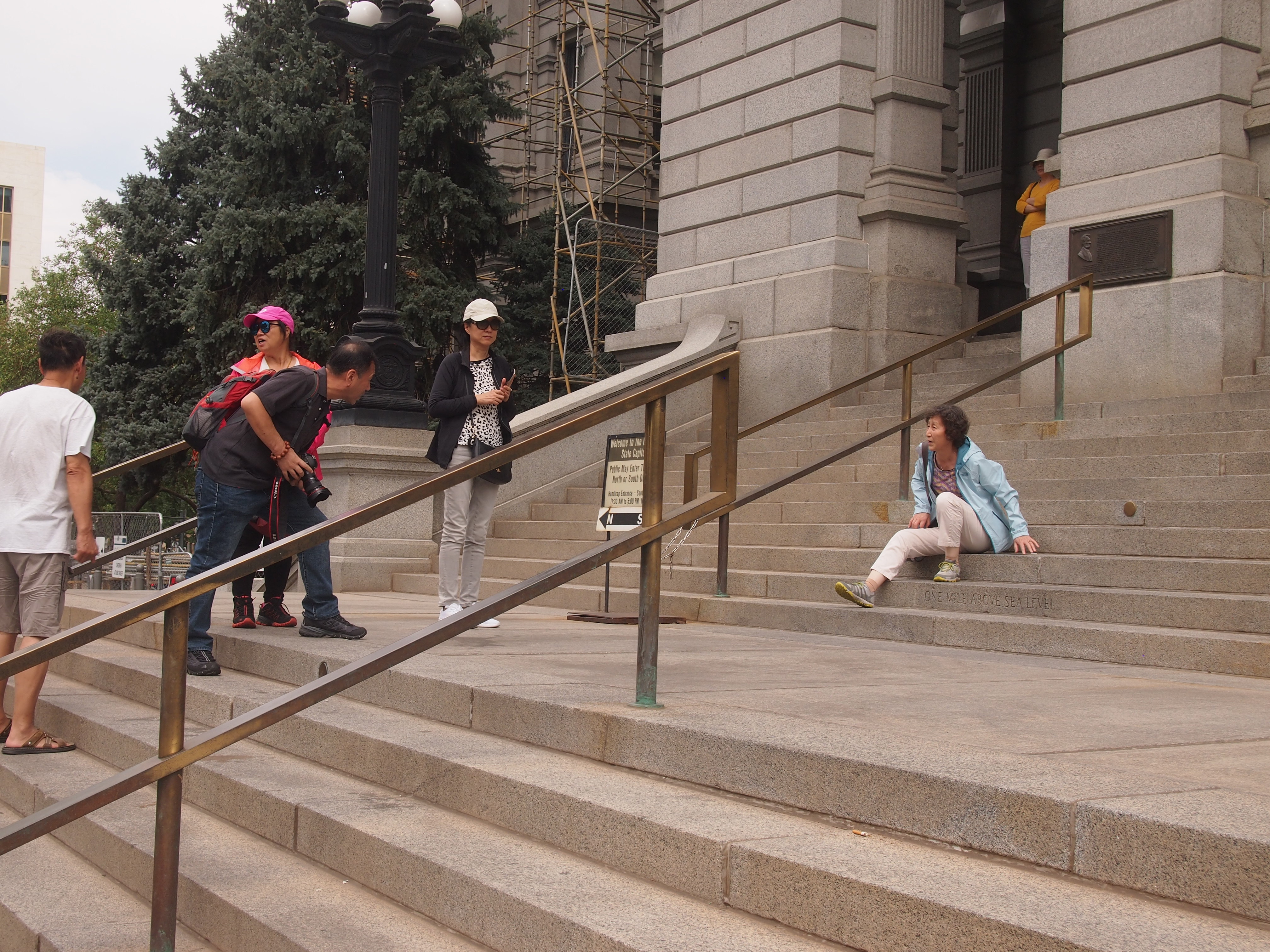 Curious. No doubt they only had a vague notion of a mile as a measurement, since presumably they’d be more familiar with the metric system and the traditional Korean units like the ri, which is about a quarter of a mile, a unit descended from the Chinese li.
Curious. No doubt they only had a vague notion of a mile as a measurement, since presumably they’d be more familiar with the metric system and the traditional Korean units like the ri, which is about a quarter of a mile, a unit descended from the Chinese li.
Then again, that’s the spirit of tourism for you. If I found a carving in East Asia asserting that the spot was One Li Above Sea Level, I might want to pose with it too.
Whatever the elevation, the capitol dome is impressive.
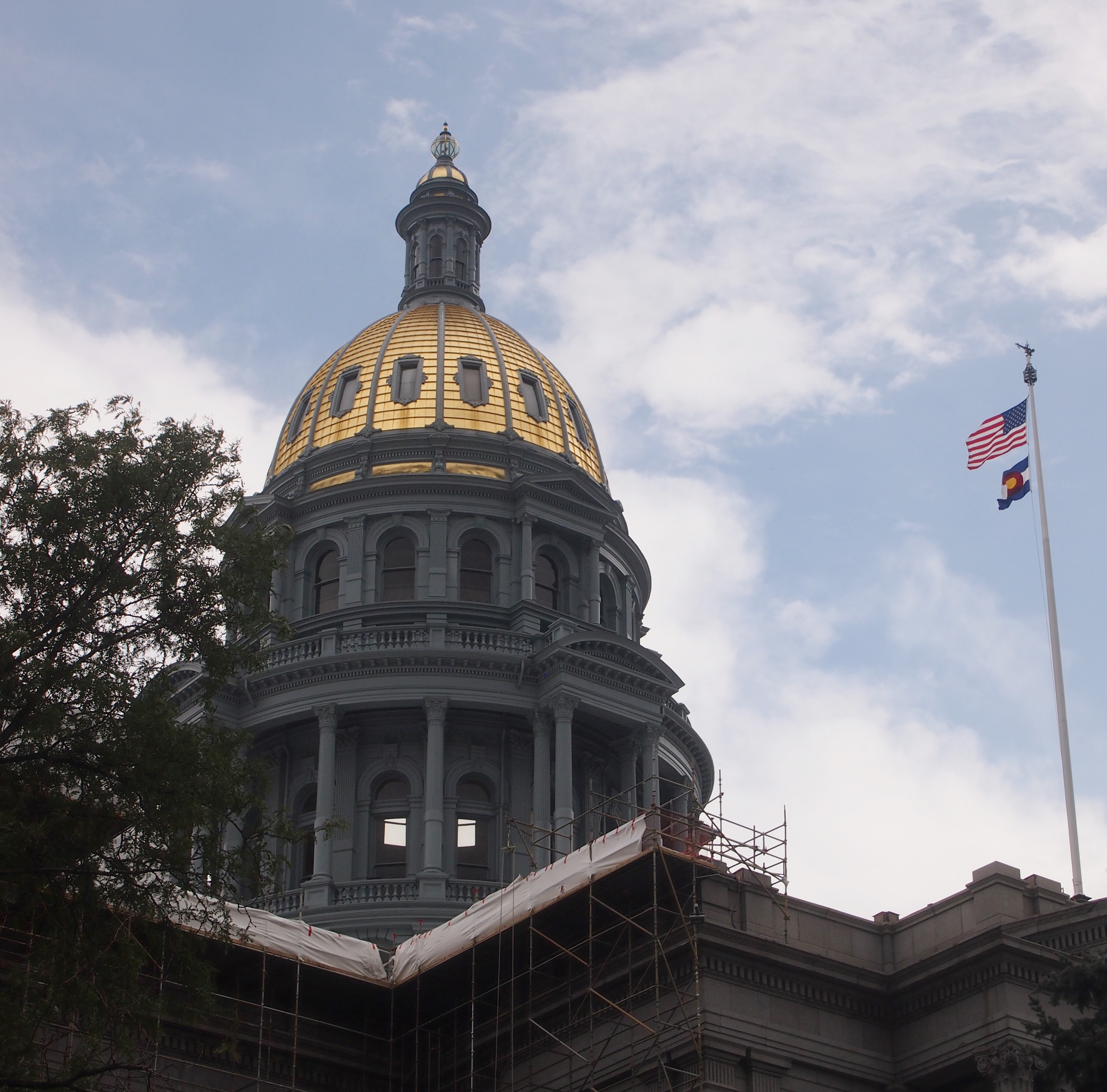 Copper panels gilded with gold leaf from a Colorado mine. Fittingly, since the state owes its origin to a gold rush. The capitol itself dates, as many capitols do, from the late 19th century, designed by Elijah E. Myers, who also did design work on the Texas and Michigan state capitols. He was the only person to work on three, it seems. Now that’s a Jeopardy question to stump the best of ’em.
Copper panels gilded with gold leaf from a Colorado mine. Fittingly, since the state owes its origin to a gold rush. The capitol itself dates, as many capitols do, from the late 19th century, designed by Elijah E. Myers, who also did design work on the Texas and Michigan state capitols. He was the only person to work on three, it seems. Now that’s a Jeopardy question to stump the best of ’em.
A further-away exterior shot.
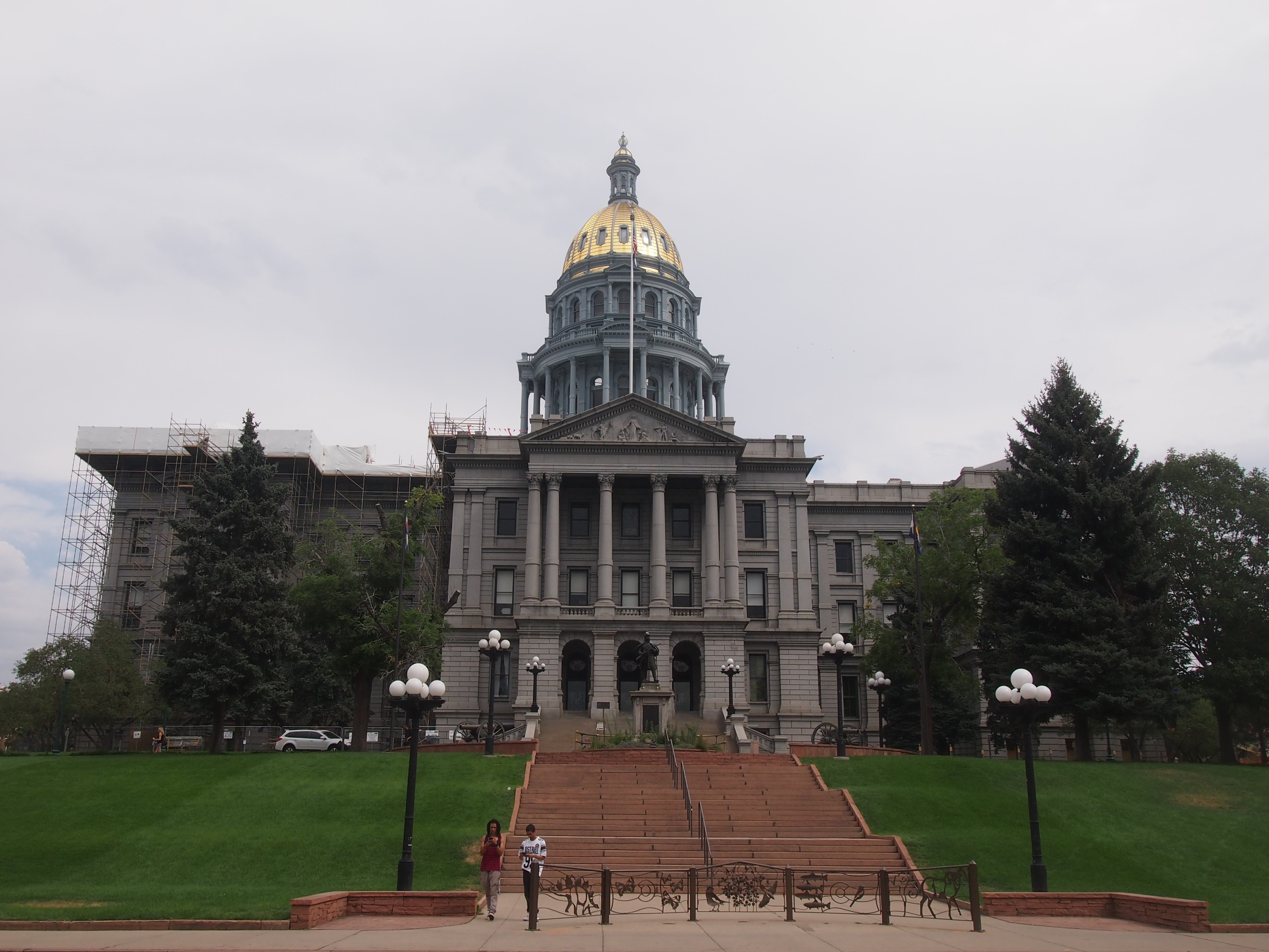 Not visible is the fact that the building is “the first state capitol in the country to be cooled by geothermal power, completed in 2013,” notes the State of Colorado’s web site. “An energy performance contract issued in June 2012 by the Colorado Department of Personnel & Administration and Chevron Energy Solutions allowed the upgrade of the Capitol’s HVAC system and installation of a geothermal well that heats and cools the House and Senate Chambers.”
Not visible is the fact that the building is “the first state capitol in the country to be cooled by geothermal power, completed in 2013,” notes the State of Colorado’s web site. “An energy performance contract issued in June 2012 by the Colorado Department of Personnel & Administration and Chevron Energy Solutions allowed the upgrade of the Capitol’s HVAC system and installation of a geothermal well that heats and cools the House and Senate Chambers.”
As mentioned, the capitol was closed on Saturday. I got a good look around the grounds instead. The area isn’t heavy on memorials, not like some states, but there are a few. Such as this Colorado Union soldier.
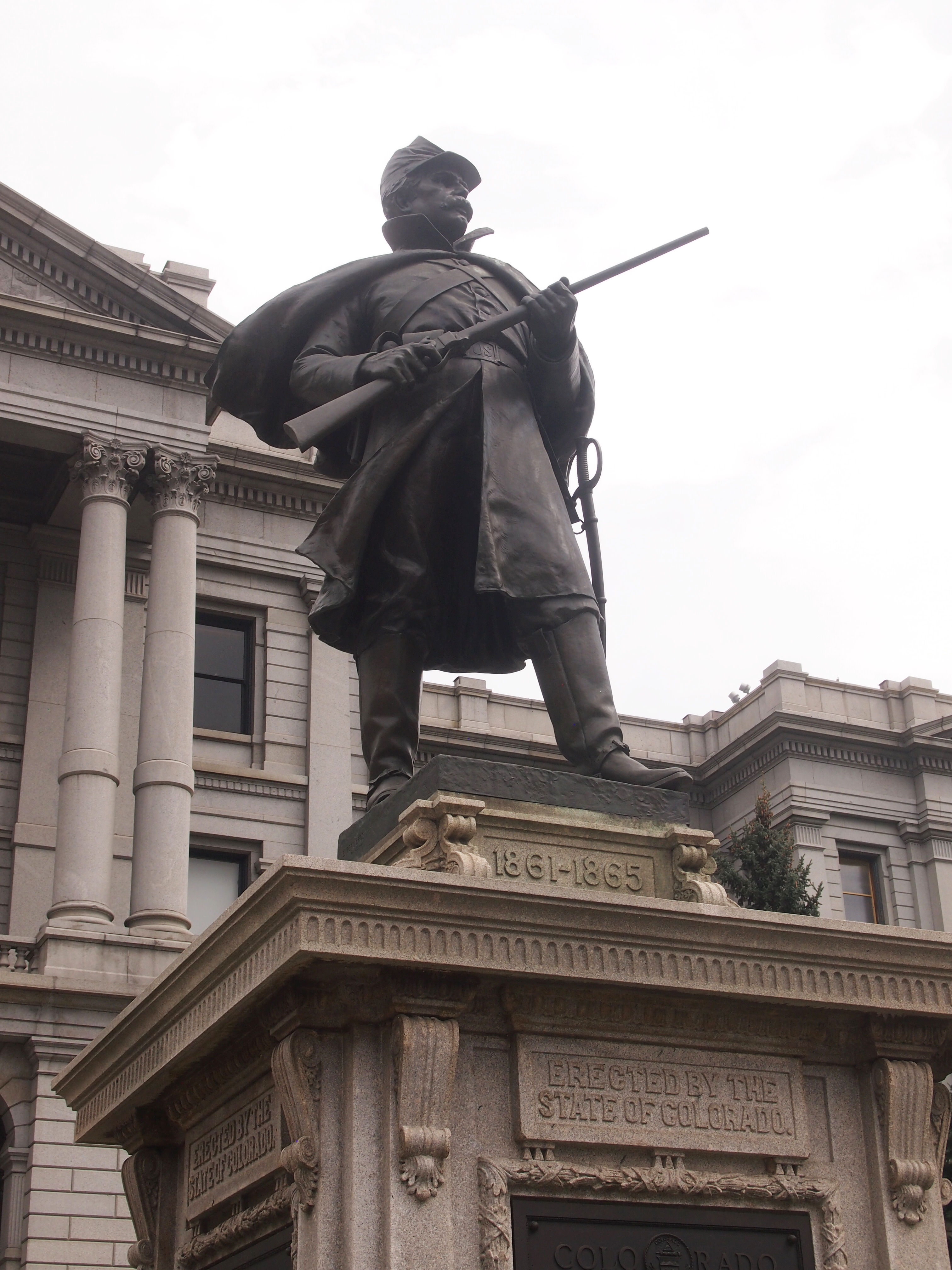 The memorial mentions the Colorado Volunteers’ 22 battles and the names of the 279 who died. You’d think that would be OK, but it turns out that only most of those battles were for the Union. A few were against Indians, including the notorious Sand Creek Massacre, so there’s been some grumbling about the memorial.
The memorial mentions the Colorado Volunteers’ 22 battles and the names of the 279 who died. You’d think that would be OK, but it turns out that only most of those battles were for the Union. A few were against Indians, including the notorious Sand Creek Massacre, so there’s been some grumbling about the memorial.
An effort is under way to built a permanent memorial on the capital grounds to the victims of Sand Creek. If there’s a temporary memorial there now, I missed it. Adding that, I think, would be better than tearing down Billy Yank.
I did notice, on the other side of the capitol, a much less dramatic memorial.
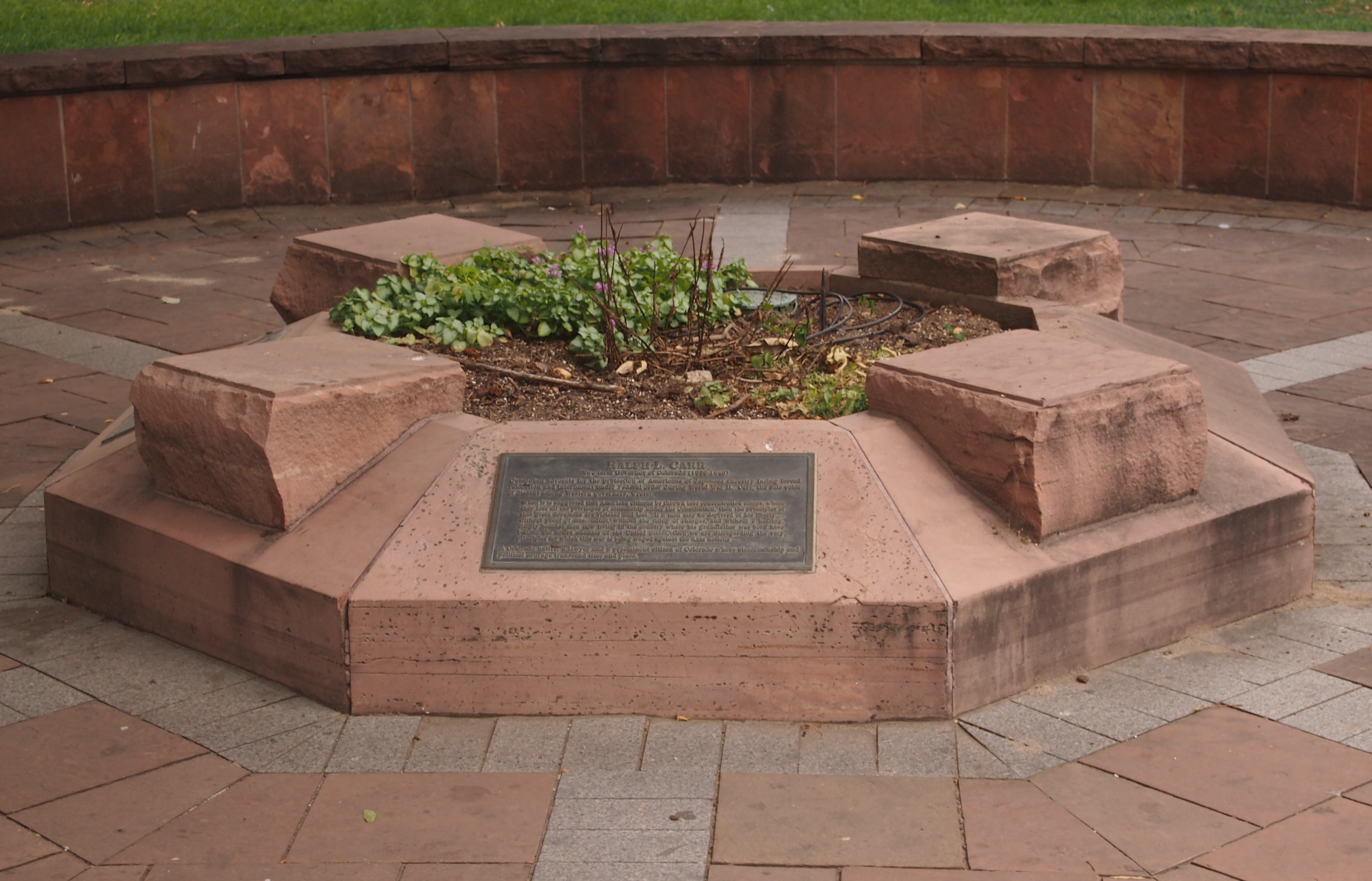 There are two plaques on the structure, and two other spots seemingly made for plaques, but which are empty. One plaque honors Colorado Gov. Ralph Carr, who objected publicly to the internment of Japanese-Americans during WWII, unlike all the other Western governors.
There are two plaques on the structure, and two other spots seemingly made for plaques, but which are empty. One plaque honors Colorado Gov. Ralph Carr, who objected publicly to the internment of Japanese-Americans during WWII, unlike all the other Western governors.
The plaque quotes him: “When it is suggested that American citizens be thrown into concentration camps, where they lose all privileges of citizenship under the Constitution, then the principles of that great document are violated and lost… we are disregarding the very principles for which this war is being waged against the Axis nations…”
His stance probably cost him a seat in the U.S. Senate in the 1942 election. He has a number of other memorials in the state in our time, however. The other plaque on the memorial is about the Amache detention camp (Granada War Relocation Center) in eastern Colorado.